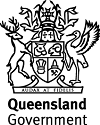Published Tuesday, 03 June, 2008 at 04:18 PM

Minister for Mines and Energy
The Honourable Geoff Wilson
Rehabilitation for old relics of our mining past
Two of Queensland’s historic abandoned mine sites are undergoing rehabilitation through funds set aside in the Bligh Government’s 2008-09 State Budget.
Croydon, in the heart of the gulf country in the state’s north west, and Mount Morgan, near Rockhampton in Central Queensland were major gold rush towns of the late 1880s.
Mines and Energy Minister Geoff Wilson said $3 million in capital funding and $2.4 million in operational funding had been set aside in the 2008-09 State Budget to rehabilitate the two sites.
“It’s the second year of a four year operational funding package of $8.2 million set down for rehabilitation,” Mr Wilson said.
“While we enjoy the benefits of the resources boom, we shouldn’t turn our backs on the old mines that helped forge our strong economy.
“Some of these old mine sites are a legacy of decades of neglect that saw mining companies move in, make their millions and move on.
“In announcing the funds, I have to acknowledge the strong representations made by the Member for Mount Isa, Betty Kiernan and the Member for Fitzroy, Jim Pearce.
“Jim Pearce invited me to inspect the abandoned Mount Morgan mine site and convinced me of the need to pour funds into its rehabilitation,” Mr Wilson said.
Minister Wilson said the rehabilitation, which started last year, aimed to reduce risks in relation to soil and ground water contamination from the abandoned mines.
In the 2007-08 State Budget, $3 million was allocated to double the capacity of the existing lime dosing water treatment plant at the Mount Morgan mine site.
“With the 2008-09 funding, work will continue with a second line at the lime dosing water treatment plant to reduce water levels in the pit.
“This will reduce the potential for spillage of contaminated pit water and tailings into the Dee River,” he said.
At Croydon, funds from the 2008-09 State Budget will allow remedial work to continue to reduce the downstream impacts by neutralising acid mine drainage.
In its heyday in 1887, Croydon was the fourth largest town in Queensland with a population of 7,000.
Mining began in Mount Morgan in 1882. It was named after the Morgan brothers who pegged out a gold mining lease on what was known as Ironstone Mountain.
When the mine closed in 1981, it had produced 225,000 kg of gold, 50,000 kg of silver and 360,000 tonnes of copper in a 99-year period.
“The result of all this activity is that what was once a large mountain is now one of the largest artificial holes on earth, over 300 metres deep.
“We will spend these funds in consultation with local stakeholders so that actions taken will be in the best interests of the community,” Mr Wilson said.
Media Inquiries: Ellen McIntyre 3225 1819

